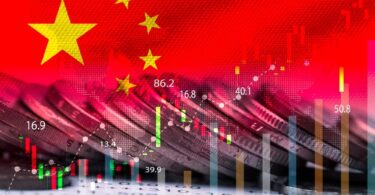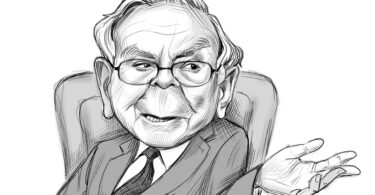Preparing for retirement is a formidable task, particularly in an era plagued by soaring inflation and looming recession concerns.
Unlike standard savings, a retirement portfolio must serve multiple purposes: it should generate a consistent income stream, shield your savings from inflation, and safeguard your capital, explains Tom Stevenson, Investment Director for Personal Investing at Fidelity International.
So, if retirement is on your horizon in about five years, what investment tactics should you employ?
Here's a compilation of expert advice…
Assets That Can Combat Inflation
For those eyeing retirement in the not-so-distant future, it's crucial to strike a balance between generating income, preserving capital, and ensuring your investments retain their value after adjusting for inflation.
This necessitates a more substantial inclination towards assets with higher risk and potential reward, such as equities, suggests Stevenson.
Conversely, Thomas Poullaouec of T. Rowe Price advocates for a significant investment in assets sensitive to inflation, like gold and commodities, given the persistent inflationary pressures.
These assets, he notes, could serve as a protective barrier against unexpected surges in inflation.
In the interim, cash reserves are often revered as a strategy to counteract inflation, particularly for reaping substantial returns, states Laith Khalaf, Head of Investment Analysis at AJ Bell.
Beyond its liquidity, cash serves as a safety net during market downturns and a source of steady income, especially in periods of elevated interest rates, add Poullaouec and Stevenson from Fidelity.
Strategizing the Stock/Bond/Cash Allocation
In orchestrating the distribution of assets among stocks, bonds, and cash, experts emphasize the importance of a harmonious equilibrium between immediate stability and future growth prospects.
Stevenson from Fidelity voices concern that the conventional portfolio composition of 60% bonds and 40% stocks is overly cautious for someone five years away from retirement.
“This approach hampers the portfolio's agility in keeping up with inflation throughout what could be an extensive retirement period,” he elaborates.
Instead, he proposes diversifying with modest contributions to gold, real estate, and infrastructure, each constituting roughly 5% of the total assets.
In contrast, Judith Ward from T. Rowe Price endorses a strategy tailored to one's age for determining asset distribution as retirement approaches.
“The more distant your retirement, the larger the portion of your portfolio should be allocated to stocks,” she advises. Incorporating bonds as retirement nears can buffer against market volatility while still presenting growth avenues.
For individuals in their 50s contemplating imminent retirement, Ward recommends dedicating 65%-85% of their portfolio to stocks, with the remainder in bonds.
For those in their 60s, a mix of 45%-65% in stocks, 30%-50% in bonds, and approximately 10% in cash is prudent, she suggests.
Optimistic about Japan and Tech Investments
Diversification remains paramount within each asset category, experts insist.
For equities, Ward advises a distribution of 60% in U.S. large-caps, 25% in developed international small-caps, and 5% in emerging markets.
Regarding bonds, her strategy includes 45% in U.S. investment-grade bonds, 10%-30% in U.S. Treasuries, 10% in unconventional bonds, 10% in international bonds, with an optional 0%-10% in both high-yield segments and emerging markets.
Predicting lucrative investments based on geographical markets is challenging due to persistent volatility.
However, Poullaouec expresses a strong preference for Japanese equities, citing the country's advantageous policies, robust fundamentals, and ongoing governance reforms. Stevenson concurs, highlighting Japan's promising blend of earnings growth, attractive valuations, and governmental backing.
He maintains a positive outlook on China, Europe, and the U.K., terming them “value markets.” Sector-wise, Stevenson favors growth-oriented stocks, especially in technology, due to their sustained resilience and defensive stance in a decelerating economic landscape.
A New Perspective on Bonds
Interestingly, Stevenson now finds bonds more appealing than stocks. “Investors can obtain a respectable yield, with prospects for capital appreciation as interest rates begin to retract, likely at a more gradual pace than previously anticipated,” he observes.
Poullaouec underscores the importance of retaining bonds in a portfolio to conserve the spending power of those approaching retirement.
He finds global high-yield bonds enticing, given their supportive credit fundamentals and superior yields, even as default rates inch upwards from historically minimal levels.
Where to invest $50 right now…
Sponsored
Before you consider trading any of the stocks in our reports, you'll want to see this.
Investing Legend Ross Givens just revealed his #1 stock for 2023.
And it's not in any of our reports…
After managing hedge funds for one of the world's largest banks, he's decided to go “all-in” on the one stock that could make investors rich in 2023.
You can view it on Mr. Givens's website, here.
Wondering what stock I'm talking about?
Click here to watch his presentation and learn for yourself.
But you have to act now because a catalyst coming in a few weeks is set to take this stock mainstream… And by then, it could be too late.






